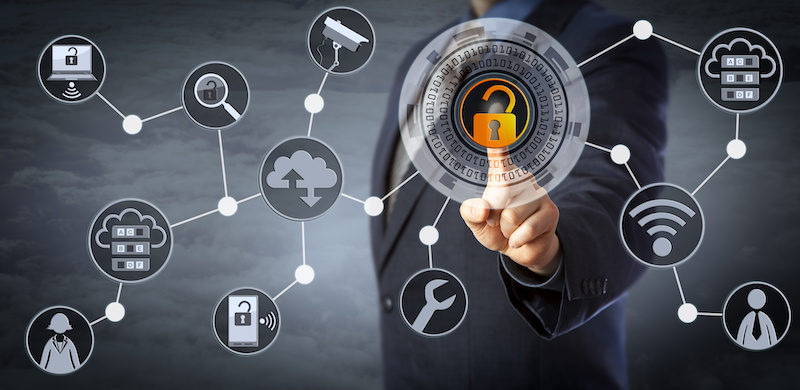
Past Data Unveils the Requirement for Businesses to Take Cyber Security Action Now
The necessity of cybersecurity in digital business has never been greater. As we look further into the plethora of data gathered over the years, a clear story emerges: enterprises must take quick steps to strengthen their cybersecurity procedures.
The scope of cyber threats is growing, and the repercussions of inactivity are becoming more serious. Previous data provides a great reference, emphasising the need for organisations prioritising cybersecurity and investing in strong protection measures.
The spread of technology over the last decade has created unprecedented prospects for company growth and efficiency. However, this digital transition has also provided new entry points for fraudsters, increasing cyber dangers.
Analysing past data reveals a disturbing trend: the frequency and sophistication of cyberattacks are increasing. According to the 2022 Cyber Security Breaches Survey, 39% of UK organisations were subjected to a cyber-attack.
This figure is more than just a number; it emphasises the stark truth that cyber risks have become an unavoidable part of today’s corporate landscape.
Businesses can no longer afford to take a passive approach to cybersecurity in the face of this evolving threat landscape. The old approach of seeing cyberattacks as possibilities rather than certainty is out of date.
The paradigm has altered, and comprehending earlier incident data is critical to recognising the urgent need for proactive cybersecurity measures.
Cybersecurity is no longer a luxury; it has the power to protect critical data, ensure operational continuity, and maintain customer and stakeholder confidence.
Because cyber threats evolve, a dynamic response is required. The adoption of strong Disaster Recovery as a Service (DRaaS) solutions is a vital component of this response.
Continuous Data Protection (CDP), a foundational component of the current DRaaS, provides a proactive approach to data security.
CDP enables organisations to recover data at any point in time, up to seconds before an outage occurs, by recording and tracking live data changes. This capacity is crucial in reducing the effect of cyber-attacks, ensuring minimum data loss and downtime.
In the present-day fast-evolving technology ecosystem, selecting the correct cybersecurity solution may be a challenging process.
However, evidence from the corporate environment indicates an increasing tendency to outsource cybersecurity demands. 60% of big UK organisations currently outsource their cybersecurity solutions.
External partners provide better experience, access to sophisticated resources, and adherence to high standards.
This trend is exemplified by DRaaS, which provides a fully managed service that includes everything from setup to recovery.
Businesses may easily manage the complexities of selecting, installing, and managing software by outsourcing cybersecurity to external expertise.
Cloud adoption has transformed enterprises by allowing digital transformation and enabling remote labour. This move, however, introduces additional concerns in terms of data security.
According to the Cloud Industry Forum (CIF), 93% of firms see the cloud as critical to their digital transformation plan. Disaster recovery requirements change when firms migrate to the cloud.
Having a partner who understands this changing landscape is critical, whether a company is in the early phases of cloud adoption or is completely entrenched in cloud operations.
The likelihood of tragedy increases as the environment of cyber threats widens. Cyberattacks are growing more complex, making protection more difficult.
The realisation that cyberattacks are not possible but are unavoidable has increased demand for disaster recovery solutions.
Traditional disaster recovery systems, which are characterised by time-consuming processes and significant upfront expenditures, are losing way to the efficiency and scalability of DRaaS.
In the middle of the cybersecurity imperative, there is a rising realisation of the need for sustainability in all parts of the business, including disaster recovery.
Businesses must examine the environmental effects of their activities to ensure a sustainable future. By outsourcing backups and server administration, DRaaS helps to reduce the environmental effect of maintaining separate outdated systems.
The capacity to add or remove services as needed optimises resource utilisation and reduces waste, aligning disaster recovery with long-term sustainability goals.
Finally, historical cyber event data offers a clear picture: firms must act immediately to strengthen their cybersecurity defences.
The increasing frequency and sophistication of cyber-attacks, along with the certainty of disasters, highlight the importance of taking preemptive steps.
This proactive strategy includes Continuous Data Protection, outsourcing cybersecurity to skilled partners, adapting disaster recovery to cloud migrations, and embracing sustainability.
As organisations confront the reality of a shifting threat landscape, using prior data lessons is more than a suggestion; it is a strategic need for a safe and resilient digital future.

